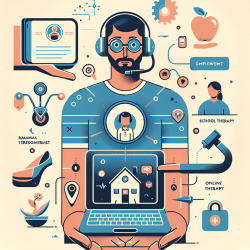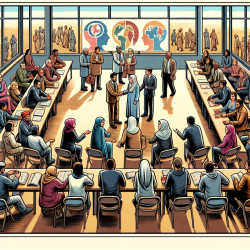In the rapidly evolving landscape of education and therapy, occupational therapists are increasingly turning to innovative tools to deliver effective online therapy services. At TinyEYE, we understand the unique challenges and opportunities that come with providing therapy in a digital format. This blog aims to inspire and equip occupational therapists with the knowledge and tools they need to excel in their roles, ultimately benefiting the students they serve.
One of the most significant advantages of online therapy is the ability to reach students who might otherwise have limited access to essential services. However, to make the most of this opportunity, therapists must be equipped with the right tools. Here are some key strategies for creating and utilizing tools that can enhance the online therapy experience:
- Interactive Software: Leveraging interactive software can make sessions more engaging and effective. Programs that include games, activities, and exercises tailored to individual needs can help keep students motivated and focused.
- Customizable Resources: Having access to a variety of customizable resources allows therapists to tailor their approach to each student's unique needs. This can include visual aids, worksheets, and digital manipulatives that can be adjusted in real-time.
- Collaborative Platforms: Utilizing platforms that facilitate collaboration between therapists, teachers, and parents can enhance the overall therapy process. These platforms can provide a space for sharing progress, setting goals, and ensuring everyone is on the same page.
- Data-Driven Tools: Tools that track and analyze data can provide valuable insights into a student's progress. This information can be used to adjust therapy plans and ensure that interventions are effective.
Creating these tools requires a blend of creativity, technical knowledge, and a deep understanding of each student's needs. Here are some steps occupational therapists can take to develop effective tools for online therapy:
- Identify Needs: Start by identifying the specific needs of your students. What are their strengths and challenges? What goals are you working towards? Understanding these factors will guide the creation of targeted tools.
- Research Existing Tools: Look into existing tools and resources that are available. What works well? What could be improved? This research can provide a foundation for developing your own tools.
- Collaborate with Colleagues: Working with other therapists can provide new perspectives and ideas. Collaboration can lead to the development of more comprehensive and effective tools.
- Test and Iterate: Once you've developed a tool, test it with your students. Gather feedback and make adjustments as needed. This iterative process ensures that the tools you create are truly effective.
At TinyEYE, we are committed to supporting occupational therapists in their mission to provide high-quality online therapy services. Our platform offers a range of tools and resources designed to enhance the therapy experience. By leveraging these tools and developing your own, you can create a dynamic and effective online therapy program that meets the needs of your students.
In conclusion, the creation and utilization of effective tools are crucial for the success of online therapy. Occupational therapists have the opportunity to make a significant impact by embracing innovation and continuously striving to improve their practice. By staying curious, collaborating with colleagues, and utilizing data-driven insights, therapists can create a supportive and engaging online therapy environment that helps students thrive.
We invite you to explore the resources available through TinyEYE and to join our community of dedicated professionals who are making a difference in the lives of students every day. Together, we can overcome the challenges of online therapy and unlock the full potential of every student we serve.










